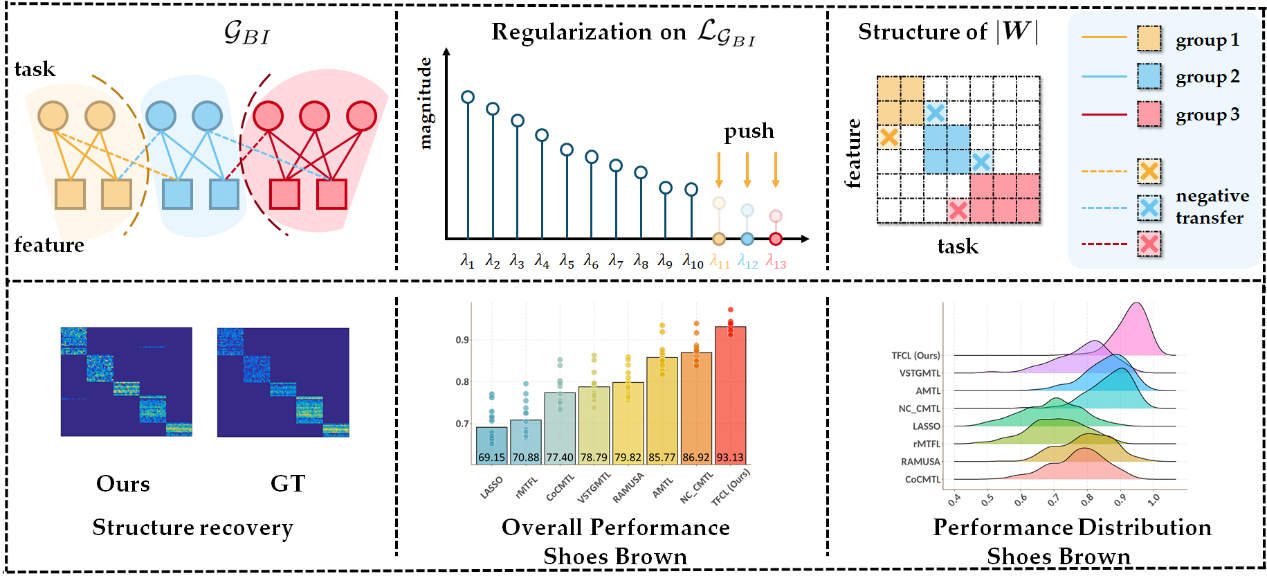Recently, VIPL's paper on multi-task learning was accepted by IEEE TPAMI. IEEE PAMI, i.e, IEEE Transactions on Pattern Analysis and Machine Intelligence is a CCF-ranked-A top-tier Artificial Intelligence journal with a high IF score as 17.73. Below is a brief introduction of this work.
Task-Feature Collaborative Learning with Application to Personalized Attribute Prediction (Zhiyong Yang, Qianqian Xu*, Xiaochun Cao, Qingming Huang*)
As an effective learning paradigm against insufficient training samples, Multi-task learning (MTL) encourages knowledge sharing across multiple related tasks so as to improve the overall performance. In MTL, a major challenge springs from the phenomenon that sharing the knowledge with dissimilar and hard tasks, known as negative transfer, often results in a worsened performance. Though a substantial amount of studies have been carried out against the negative transfer, most of the existing methods only model the transfer relationship as task correlations, with the transfer across features and tasks left unconsidered. Different from the existing methods, our goal is to alleviate negative transfer collaboratively across features and tasks. To this end, we propose a novel multi-task learning method called Task-Feature Collaborative Learning (TFCL). Specifically, we first propose a base model leveraging the collaborative grouping of features and tasks while suppressing inter-group knowledge sharing via pursuing a block-diagonal structure. Subsequently, we propose an optimization method for the model. Theoretically, we provide new insights from two dimensions. From one dimension, we show that our proposed optimization algorithm enjoys the global convergence property for non-convex problems. From another dimension, we provide deterministic and asymptotic conditions for block-diagonal structure recovery. As a practical extension, we extend the base model via allowing overlapping features and differentiating the hard tasks and apply it to the personalized attribute prediction problem with fine-grained modeling of user behaviors. Finally, experimental results on both simulated dataset and real-world datasets demonstrate the effectiveness of our proposed method.

Download:
